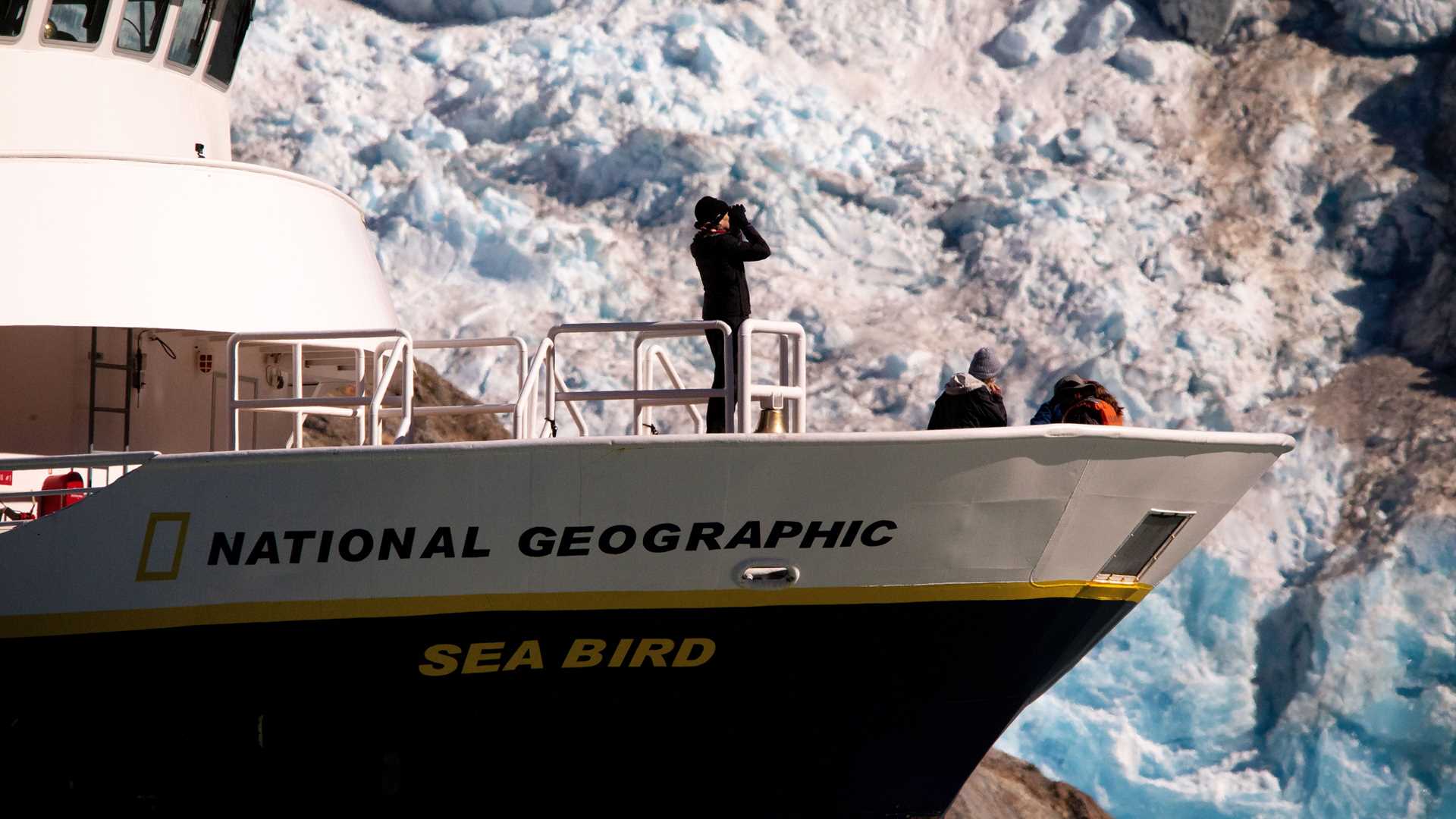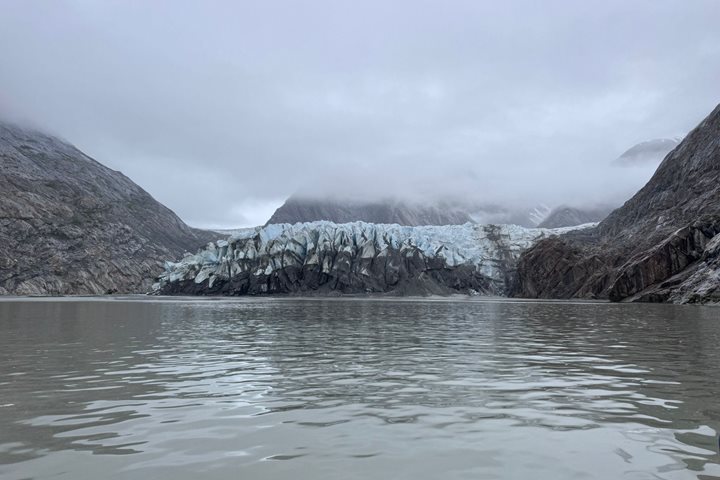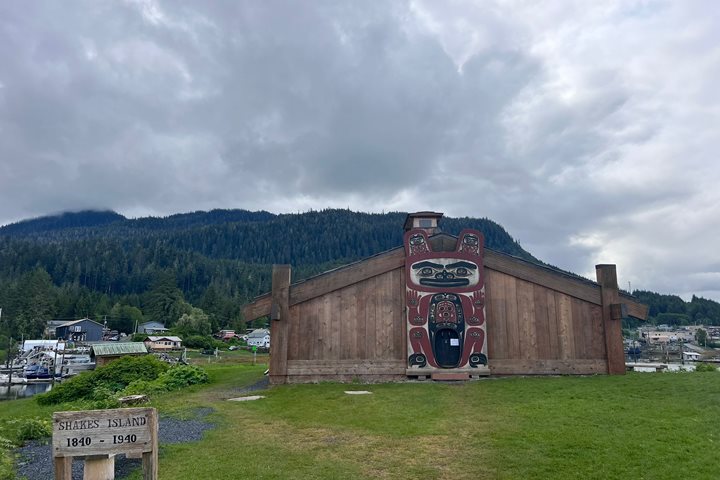Overnight, National Geographic Sea Bird brought us through Frederick Sound and Stephens Passage from the Kuiu Islands to Holkham Bay. We crossed the bar–an underwater, terminal glacial moraine–at Holkham Bay in the late morning, and we enjoyed cruising through the tall, glacially carved walls of the dramatic Tracy Arm-Fords Terror Wilderness on a rare blue bird day. As we made our way up the fjord, naturalist and geologist Nicole Yamagiwa taught our guests about the glaciology of Tracy Arm from the bow of our ship. Is there any better way to learn about U-shaped valleys, moraines, cirques, hanging valleys, and roche moutonnée than with a geologist holding a whiteboard whilst sailing through the features you are learning about? I think not! It was incredible! A stop at Hole-in-the-Wall Waterfall was an incredible addition to our day. Upon arrival at our heave to location, our able crew lowered inflatable boats to the water, and our team of naturalists and photographers took our guests out by small watercraft to the South Sawyer Glacier terminus to explore icebergs, seals, glacial calving, and even mountain goats! At the end of our day, our guests enjoyed a last dinner aboard National Geographic Sea Bird, followed by a photography slideshow prepared by our photo instructor Lisa Hornak. It has truly been an incredible journey these last six days!
6/5/2025
Read
National Geographic Sea Lion







